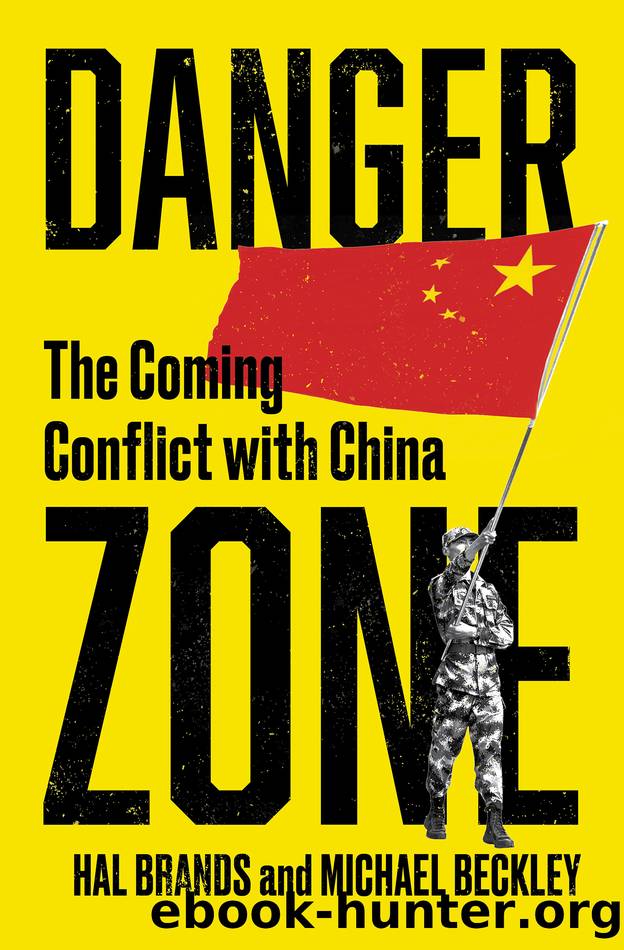Danger Zone: The Coming Conflict With China by Michael Beckley & Hal Brands

Author:Michael Beckley & Hal Brands [Beckley, Michael & Brands, Hal]
Language: eng
Format: epub
Tags: Political Science, Diplomacy, International Relations, Geopolitics, Epub3, World, Security (National & International), Asian
ISBN: 9781324021315
Google: H_ZhEAAAQBAJ
Publisher: Norton
Published: 2022-08-16T20:55:32+00:00
FIRST THINGS FIRST
First, prioritize ruthlessly. Thinking clearly about where to bet big and where to conserve resources is always important; it can be a matter of life and death when the level of threat is high and the margin for error is low. The key is to prevent near-term breakthroughs that can dramatically shift the longer-term balance of powerâand to make early investments that create lasting legacies of strength. The United States mostly obeyed this rule during the early Cold War, although doing so was harder than it seemed.
The basic problem, then as now, was that America was under pressure almost everywhere. In 1946â1947, the Truman administration faced crises along an arc of instability running from the Atlantic coast of Europe all the way to the Pacific. Communist advances seemed possible, even likely, in France and Italy, Greece and Turkey, Iran and Indonesia, China and Korea, and other locales. The question was how Washington would respond.
Truman gave one answer in March 1947, when he went before Congress to request roughly $400 million in emergency aid for Greece and Turkey, the former menaced by a Communist insurgency and the latter facing Soviet territorial demands and military coercion. âAt the present moment in world history nearly every nation must choose between alternative ways of life,â Truman declared. The United States must âsupport free peoples who are resisting attempted subjugation by armed minorities or by outside pressures.â16
The stark phrasing was deliberate. âThis was Americaâs answer to the surge of expansion of Communist tyranny,â Truman later wrote. âIt had to be clear and free of hesitation or double talk.â17 The United States must rally domestic support for containment by vividly explaining what was at stake in the Cold War; it must signal that America would stand with countries resisting totalitarian aggression. But the implication of Trumanâs message was that America would respond equally to Communist probes everywhere, and the president soon realized this was impossible. âOur resources are not unlimited,â he admitted. A refusal to economize anywhere would lead to weakness everywhere.18
Trumanâs team spent much of 1947 hashing out which theaters of the competition were truly vitalâwhere immediate setbacks might give Moscow a lasting advantage, and where wins today might give the West an enduring edge. The vital sites were Japan and, especially, Western Europe. If these two centers of industrial might fell under Soviet control, the entire global balance might tip in Stalinâs favor. If they could be revived and tied to the non-Communist world, the Kremlin would be at a grave, possibly insurmountable, deficit. âThat means peace in the world, if we can get recovery in Europe,â Truman commented: The region was the center of gravity in the Cold War.19
Western Europe and Japan were crucial in another respect: They were the areas that most highlighted the asymmetry of U.S. and Soviet aims. For Moscow to gain the upper hand, it would have to control countries where most people preferred to remain free of Communist domination. For the United States to preserve its position, it had only to deny the Soviets that control.
Download
This site does not store any files on its server. We only index and link to content provided by other sites. Please contact the content providers to delete copyright contents if any and email us, we'll remove relevant links or contents immediately.
| Arms Control | Diplomacy |
| Security | Trades & Tariffs |
| Treaties | African |
| Asian | Australian & Oceanian |
| Canadian | Caribbean & Latin American |
| European | Middle Eastern |
| Russian & Former Soviet Union |
The Secret History by Donna Tartt(18267)
The Social Justice Warrior Handbook by Lisa De Pasquale(11969)
Thirteen Reasons Why by Jay Asher(8492)
This Is How You Lose Her by Junot Diaz(6476)
Weapons of Math Destruction by Cathy O'Neil(5871)
Zero to One by Peter Thiel(5517)
Beartown by Fredrik Backman(5386)
The Myth of the Strong Leader by Archie Brown(5255)
The Fire Next Time by James Baldwin(5041)
How Democracies Die by Steven Levitsky & Daniel Ziblatt(4978)
Promise Me, Dad by Joe Biden(4920)
Stone's Rules by Roger Stone(4879)
100 Deadly Skills by Clint Emerson(4711)
A Higher Loyalty: Truth, Lies, and Leadership by James Comey(4576)
Rise and Kill First by Ronen Bergman(4558)
Secrecy World by Jake Bernstein(4419)
The David Icke Guide to the Global Conspiracy (and how to end it) by David Icke(4416)
The Farm by Tom Rob Smith(4340)
The Doomsday Machine by Daniel Ellsberg(4262)
